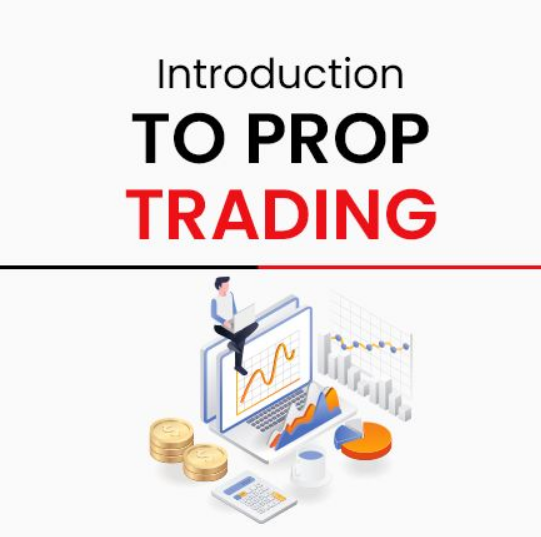Introduction to Prop Trading in Asia
Prop trading in Asia is experiencing a dynamic transformation, with firms leveraging advanced backtesting and analytical tools to stay ahead in competitive markets. In this comprehensive guide, you’ll gain actionable insights into cutting-edge strategies, detailed tool comparisons, and expert backtesting methodologies tailored to both retail and institutional environments.


Figure 1: Screenshot illustrating a backtesting report interface in TradingView, highlighting key performance metrics.
Understanding the Prop Trading Landscape in Asia
The Asian market presents unique opportunities and challenges for proprietary trading. Regulatory frameworks such as MiFID II, ESMA, and NFA rules play a significant role in shaping trading practices. Prop trading firms must navigate these regulations while ensuring robust risk management and data compliance.
Key Trends & Regulatory Insights
- Regulatory Environment: Firms must adhere to local and international standards, impacting strategy execution and risk controls.
- Market Volatility: Increased market fluctuations demand agile strategies and real-time analysis tools.
- Technological Advancements: Adoption of automated backtesting platforms that integrate seamlessly with broker APIs and real-time feeds.
Advanced Backtesting Strategies in Prop Trading
One of the core aspects of successful prop trading is utilizing advanced backtesting techniques. Backtesting not only evaluates historical performance but also minimizes pitfalls such as overfitting, survivorship bias, and look-ahead bias. Here are the expert strategies to consider:
Identifying and Mitigating Common Backtesting Pitfalls
- Overfitting: Use robust out-of-sample testing to validate your models.
- Look-Ahead Bias: Ensure your strategy only uses data available at the time of the trade.
- Survivorship Bias: Incorporate both winners and losers in performance evaluations.
Integrating forward testing alongside backtesting can further refine your strategies. Test your models through paper trading and monitor key performance metrics such as the Sharpe ratio, maximum drawdown, and profit factor.
Walk-Forward Optimization vs. Traditional Backtesting
Walk-forward optimization continuously evolves with market conditions, providing a dynamic approach compared to static historical backtesting. This method enables traders to recalibrate strategies in real time, potentially improving profitability and reducing unexpected risks.
In-Depth Tool Comparisons for Prop Trading Backtesting
Choosing the right tool is critical for executing advanced backtesting strategies. Below is a comparison of widely used platforms that offer distinctive features important for both retail traders and prop trading firms.
| Tool | Backtesting Features | Data Quality | Integration | Pricing | Suitability |
|---|---|---|---|---|---|
| TradingView | Vectorized backtesting with historical data analysis and commission/slippage adjustments. | Rich historical data across multiple asset classes, with real-time feeds. | API access, broker integrations, and compatibility with analytics platforms. | Free with premium upgrades. | Ideal for retail traders and scalable for prop firms. |
| MetaTrader 5 | Event-driven backtesting with tick-level data and stress testing features. | High-quality historical and tick data. | Robust broker integration and API support. | Free demo accounts, with premium broker fees. | Widely used by both retail and institutional traders. |
| NinjaTrader | Comprehensive backtesting with scenario analysis and automated parameter optimization. | Extensive historical datasets and real-time data synchronization. | Advanced integration with third-party plugins and broker APIs. | Competitive pricing with free simulation mode. | Suitable for both beginners and advanced prop trading operations. |
| Backtrader | Open-source, highly customizable backtesting framework in Python with scenario analysis. | Access to various data sources, though quality depends on source selection. | API integrations via custom scripting; versatile in connecting to multiple brokers. | Free and community-supported. | Best for quantitative researchers and sophisticated prop trading models. |
Case Study: Enhancing Strategy Robustness Through Automated Backtesting
A leading prop trading firm in Asia recently integrated NinjaTrader to overhaul their backtesting infrastructure. By shifting to automated parameter optimization and real-time scenario analysis, the firm observed a 15% improvement in their Sharpe ratio and a 20% reduction in maximum drawdown. This case study highlights the importance of choosing tools that not only simulate historical performance but also offer advanced stress testing capabilities to mitigate market risks.
Implementing Best Practices in Backtesting and Forward Testing
For traders and risk managers, ensuring data quality and validation through a robust testing framework is essential. Here are actionable steps to enhance your backtesting process:
Best Practices for Data Sourcing and Quality Control
- Reliable Data Sources: Prioritize platforms offering tick data and adjust for missing data and corporate actions.
- Data Cleaning: Ensure historical data is free from errors and outliers that could skew results.
- Parameter Optimization: Utilize automated optimization features to fine-tune strategy inputs without overfitting.
Integrating Forward Testing and Risk Management
After achieving promising results in backtesting, it is crucial to integrate forward testing (paper trading) before live deployment. Monitoring key metrics during forward testing such as drawdown and trade execution speed is vital. Here is a sample Python code snippet using Backtrader for a basic strategy backtest:
import backtrader as bt
class TestStrategy(bt.Strategy):
def __init__(self):
self.sma = bt.indicators.SimpleMovingAverage(self.data.close, period=15)
def next(self):
if self.data.close[0] > self.sma[0]:
self.buy()
elif self.data.close[0] < self.sma[0]:
self.sell()
cerebro = bt.Cerebro()
cerebro.addstrategy(TestStrategy)
# Data and execution setup here
cerebro.run()
Such scripts can be iterated with walk-forward analysis to adjust strategies based on evolving market conditions.

Figure 2: A comparative chart of key prop trading tools, demonstrating performance metrics and integration capabilities.
Pro Tips & Industry Insights
Pro Tip: Always incorporate a risk management checklist and a trading journal template into your workflow. Tracking daily performance and adjustments can highlight potential strategy improvements. Industry Insight: Regulatory shifts in Asian markets require continuous monitoring; subscribe to regulatory updates to ensure compliance.
Internal Resources & Next Steps
For further enhancement of your prop trading strategies, consider exploring our related resources:
By implementing these advanced backtesting techniques and leveraging powerful tools, you'll be well-equipped to navigate the competitive world of prop trading in Asia. For a complete risk management checklist and trading journal template, download our free resource bundle and optimize your trading framework today.
Conclusion
Advanced prop trading in Asia demands a nuanced approach that integrates state-of-the-art backtesting, automation, and robust risk management. By understanding the specific features of tools like TradingView, MetaTrader 5, NinjaTrader, and Backtrader, traders and firms alike can enhance strategy performance and ensure regulatory compliance. Stay updated, continuously test, and refine to succeed in this challenging yet rewarding arena.
Take the next step in your trading journey by subscribing to our newsletter for the latest insights and attending our upcoming webinar on improving algorithmic trading systems.







